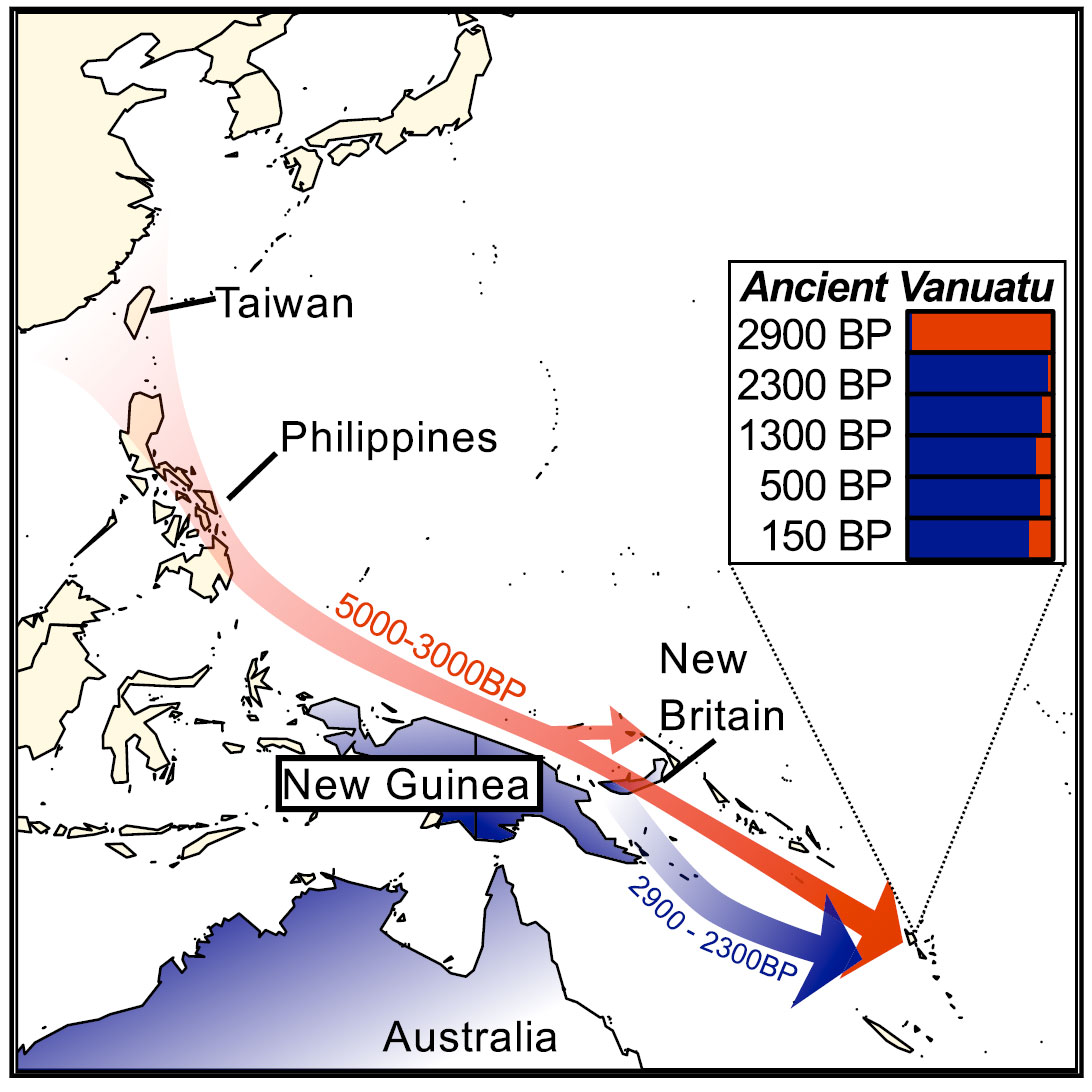Open Access article Population Turnover in Remote Oceania Shortly after Initial Settlement, by Lipson, Skoglund, Spriggs, et al. (2018), based on the recent preprint at bioRxiv.
Summary:
Ancient DNA from Vanuatu and Tonga dating to about 2,900–2,600 years ago (before present, BP) has revealed that the “First Remote Oceanians” associated with the Lapita archaeological culture were directly descended from the population that, beginning around 5000 BP, spread Austronesian languages from Taiwan to the Philippines, western Melanesia, and eventually Remote Oceania. Thus, ancestors of the First Remote Oceanians must have passed by the Papuan-ancestry populations they encountered in New Guinea, the Bismarck Archipelago, and the Solomon Islands with minimal admixture [ 1 ]. However, all present-day populations in Near and Remote Oceania harbor >25% Papuan ancestry, implying that additional eastward migration must have occurred. We generated genome-wide data for 14 ancient individuals from Efate and Epi Islands in Vanuatu from 2900–150 BP, as well as 185 present-day individuals from 18 islands. We find that people of almost entirely Papuan ancestry arrived in Vanuatu by around 2300 BP, most likely reflecting migrations a few hundred years earlier at the end of the Lapita period, when there is also evidence of changes in skeletal morphology and cessation of long-distance trade between Near and Remote Oceania [ 2, 3 ]. Papuan ancestry was subsequently diluted through admixture but remains at least 80%–90% in most islands. Through a fine-grained analysis of ancestry profiles, we show that the Papuan ancestry in Vanuatu derives from the Bismarck Archipelago rather than the geographically closer Solomon Islands. However, the Papuan ancestry in Polynesia—the most remote Pacific islands—derives from different sources, documenting a third stream of migration from Near to Remote Oceania

This second wave of migrants came from New Britain, east of New Guinea
A third wave spread different ancestry to the far-flung islands of Polynesia
See also:
- Language continuity despite population replacement in Remote Oceania
- Genomic history of South-East Asia: eastern Polynesians, Peninsular Malaysia and North Borneo
- Islands across the Indonesian archipelago show complex patterns of admixture
- Two more studies on the genetic history of East Asia: Han Chinese and Thailand
- Earliest modern humans outside Africa and ancient genomic history
- Review article about Ancient Genomics, by Pontus Skoglund and Iain Mathieson
- Review article on the origin of modern humans: the multiple-dispersal model and Late Pleistocene Asia
- Reconstructing the demographic history of the Himalayan and adjoining populations
- Ancient Di-Qiang people show early links with Han Chinese
- Optimal Migration Routes of Initial Upper Palaeolithic Populations to Eurasia
- Genetic landscapes showing human genetic diversity aligning with geography